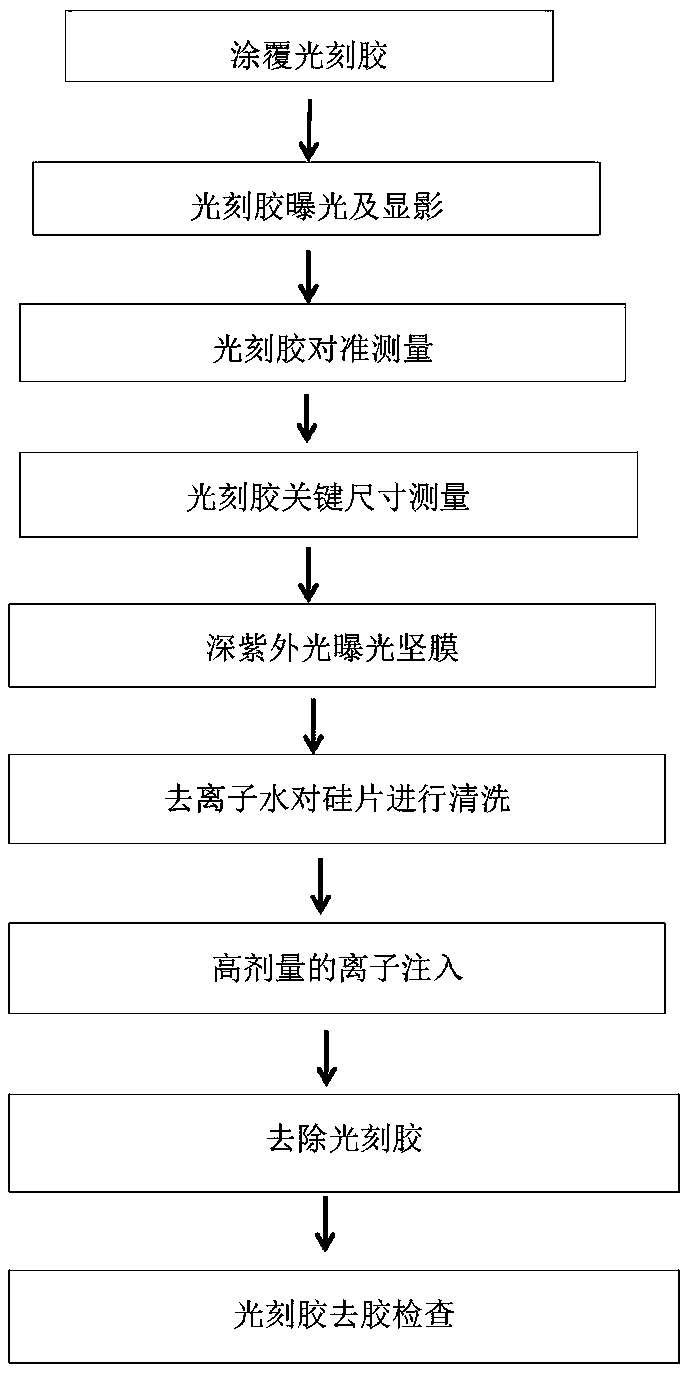Method for enhancing adhesion of photoresist after developing
A photoresist and adhesion technology, applied in photosensitive material processing, electrical components, semiconductor/solid-state device manufacturing, etc., can solve problems such as photoresist peeling, improve process latitude, and solve the problem of photoresist peeling. Effect
- Summary
- Abstract
- Description
- Claims
- Application Information
AI Technical Summary
Problems solved by technology
Method used
Image
Examples
Embodiment Construction
[0020] The method for enhancing photoresist adhesion after development of the present invention comprises the following process steps:
[0021] The first step is to coat the photoresist; the positive or negative photoresist is evenly coated on the surface of the silicon wafer by spin coating, and the hard film is baked.
[0022] In the second step, the photoresist is exposed and developed to complete the pattern transfer.
[0023] The third step is photoresist alignment measurement.
[0024] The fourth step is photoresist critical dimension (CD) measurement.
[0025] The fifth step is to expose the hardened film to UVQ with deep ultraviolet light.
[0026] In the sixth step, the silicon wafer is cleaned and infiltrated with deionized water.
[0027] The seventh step is to perform high-dose ion implantation.
[0028] In the eighth step, the photoresist is removed by a plasma stripping method.
[0029] The ninth step is to check the photoresist removal.
[0030] Through th...
PUM
 Login to View More
Login to View More Abstract
Description
Claims
Application Information
 Login to View More
Login to View More - R&D
- Intellectual Property
- Life Sciences
- Materials
- Tech Scout
- Unparalleled Data Quality
- Higher Quality Content
- 60% Fewer Hallucinations
Browse by: Latest US Patents, China's latest patents, Technical Efficacy Thesaurus, Application Domain, Technology Topic, Popular Technical Reports.
© 2025 PatSnap. All rights reserved.Legal|Privacy policy|Modern Slavery Act Transparency Statement|Sitemap|About US| Contact US: help@patsnap.com

